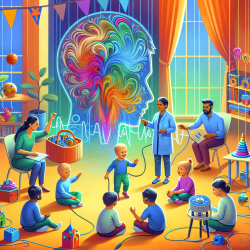Introduction
In the quest to enhance child outcomes, especially in speech and language development, leveraging the latest scientific research is crucial. A fascinating study titled Toxicity by Descent: A Comparative Approach for Chemical Hazard Assessment offers insights that can be transformative. This research delves into the evolutionary conservation of genes and pathways across species, providing a new lens through which we can understand human health and development.
Understanding the Research
The study explores how genes and pathways that are fundamental to health have deep evolutionary roots. It highlights that over 70% of gene families associated with diseases are shared across a wide range of animal species. This cross-species conservation suggests that insights gained from one species can inform our understanding of others, including humans.
Four key conditions were tested in the study:
- Genes fundamental to health evolved early in animal evolution.
- Molecular functions of pathways are better conserved than individual genes.
- The most conserved pathways cause adverse outcomes when disrupted.
- Gene sets serving as molecular signatures are enriched by evolutionarily conserved genes.
Implications for Practitioners
For practitioners in speech language pathology, these findings underscore the importance of adopting a holistic, data-driven approach to therapy. By understanding the evolutionary basis of health-related pathways, practitioners can better predict and address potential developmental issues in children.
Here are some actionable steps practitioners can take:
- Embrace Cross-Species Insights: Use evolutionary data to inform therapy strategies, recognizing that certain pathways and genes are conserved across species.
- Integrate Genomic Data: Consider incorporating genomic insights into assessments and interventions to tailor therapy more effectively.
- Collaborate with Researchers: Engage with ongoing research to stay updated on new findings that can enhance therapeutic outcomes.
Encouraging Further Research
The study encourages further exploration into the conservation of pathways and their implications for human health. Practitioners are urged to contribute to and utilize ongoing research to refine their approaches. By doing so, they can help bridge the gap between scientific discovery and practical application, ultimately leading to better outcomes for children.
Conclusion
By integrating insights from evolutionary toxicology into speech language pathology, practitioners can enhance their understanding of developmental processes and improve therapeutic outcomes. This approach not only benefits individual children but also contributes to the broader field of child development.
To read the original research paper, please follow this link: Toxicity by descent: A comparative approach for chemical hazard assessment.










